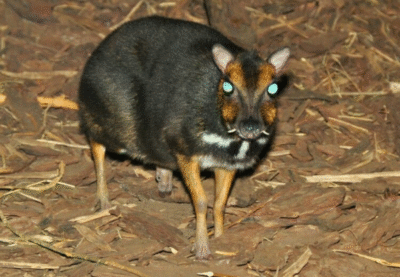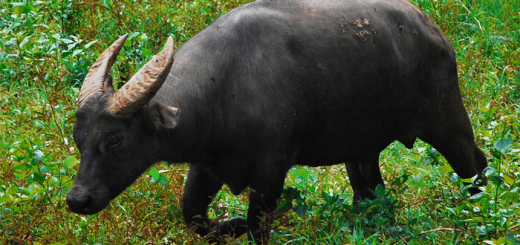Philippine Mouse Deer – Pilandok

Philippine Mouse Deer, locally known as Pilandok or Balabac Mousedeer is a small terrestrial mammal endemic to the island of Palawan in the Philippines.
Pilandok or Balabac Mousedeer belong to a very ancient line of hoofed animals, they are not actually deer, but belong to a group of their own, which is equally related to deer, pigs, cattle and other ungulates. The Pilandok is restricted to lowland forests of the Balabac group of islands in the very south of Palawan, where it is only recorded from Balabac, Ramos and Bugsuk. Since it is one of the most familiar wildlife species in this area, it has high potential to serve as flagship for the forest ecosystems of this island group. It was selected as flagship species of the Municipality of Balabac.
It has a black and brown coat with white stripes on the throat and chest. Each individual hair has sections of different colors, the base is generally light (ranging from white to ashy brown), with a tawny, orange, or brown midsection, and a long black tip. The most striking markings of the Pilandok are on the throat, with three narrow white stripes beginning from a white patch under the chin and extending down towards the chest. In intense contrast to these white stripes (and sharply defining them), the rest of the throat is jet black, in some specimens the black coloration even overtakes and obscures the stripes. Towards the chest, these black and white markings disappear into a broad brown band which crosses the lower throat. The head itself is generally darker in color than the rest of the body. Broad rufous or fulvous ‘eyebrow’ stripes extend from the anterior corners of the eyes to the base of ears. The bridge of the nose and forehead are dark brown, becoming increasingly infused with black towards the crown of the head. The sides of the head are more fulvous. A naked glandular patch on the underside of the jaw is bordered with white, which runs into the white patch at the top of the throat. Its slender legs and arched back are covered by brown fur, with a white base. A dark line runs from each ear past the eye toward the nose.
On average, the Philippine mouse deer measures 40 to 50 cm from the head to the tail base and reaches an average of 18 cm tall at shoulder height. The male of its species does not have any antlers like a true deer. They use their large, tusk-like canine teeth on the upper jaw for self-defense or territorial fights with other males.
It is a solitary, nocturnal animal, but has on occasion been seen in pairs for short periods of time. The Pilandok’s main diet consists of leaves, flowers, and other vegetation in the dense forest undergrowth. During the day, it takes shelter in the dense primary and secondary forests and avoids movement. At sundown, it will wander into mangroves and more open areas to feed. They have also been spotted along the seashore.
Scientific Name: Tragulus nigricans
Family: Tragulidae
References:
https://en.wikipedia.org/wiki/Philippine_mouse-deer










